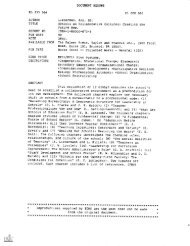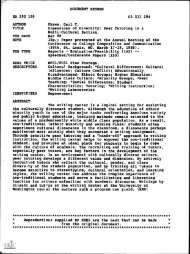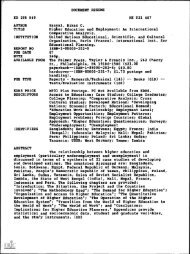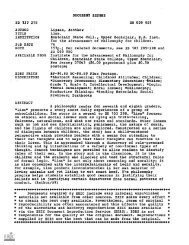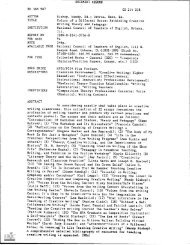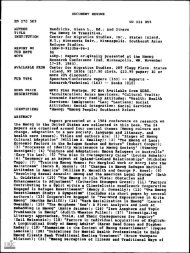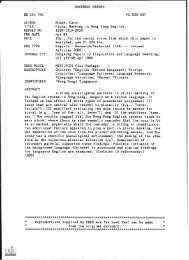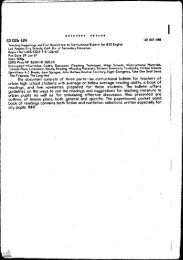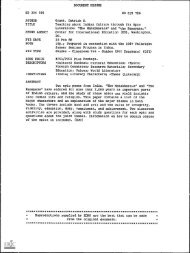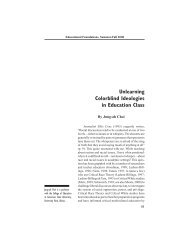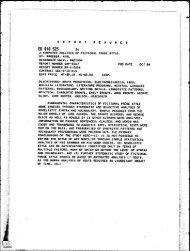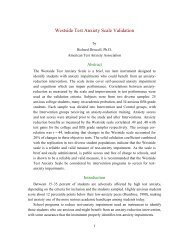Prison Literacy: Implications for Program and Assessment Policy.
Prison Literacy: Implications for Program and Assessment Policy.
Prison Literacy: Implications for Program and Assessment Policy.
Create successful ePaper yourself
Turn your PDF publications into a flip-book with our unique Google optimized e-Paper software.
B. WHAT TH E STATISTICSDo AND Do NOTTELL USAccording to the most recent reports, the following details givesome indication of the overall picture: the most up-to-datesummary report in print that we were able to find confirmed thegeneral impression that one gains from surveying previous reports,estimates, <strong>and</strong> local studies. Using a sixth-grade level as thest<strong>and</strong>ard <strong>for</strong> literacy, 50% of the adult inmates in U.S. prisons areilliterate. Using a 12th-grade level as the st<strong>and</strong>ard, 75% of inmatesare illiterate, i.e., the illiteracy level of the prison population isapproximately three times that of the general population (Ryan,1990), <strong>and</strong> the numbers are even worse in some sections of thecountry where general educational levels are lower <strong>and</strong> classdistinctions sharper (Martin, 1979a & b). Even though the home,the church, <strong>and</strong> the societyincreasingly in ethnic, economic, <strong>and</strong>class breakdownmust all take their share of the blam... (Davidson,1989; cf. Thompson & Doddler, 1986; Wiley & Conciatore, 1989),among the incarcerated, the inadequacy of American publicschooleducation <strong>and</strong> its GED-style equivalents becomes patent.Schools are scrambling to become more of the solution <strong>and</strong> lessof the problem (Mauers, 1974; Phillips & Kelly, 1979).Statistics published in 1976 are largely valid today:75 to 90% of juvenile offenders have learning disabilities.Up to 50% of adult inmates are functionally illiterate.Up to 90% of adult inmates are school drop-outs (Herschler,1976).In 1979, the U. S. Bureau of <strong>Prison</strong>s estimated thatapproximately 50% of adult inmates in federal <strong>and</strong> state facilitiescould neither read nor write. At least 90% of all inmates had notcompleted high school, <strong>and</strong> the majority had less than an eighthgradeeducation. According to the Bureau's own 1972 policy, asixth-grade reading level was required be<strong>for</strong>e inmates might bereleased, but the Bureau's policy was ahead of its practice. Thedem<strong>and</strong>s of the Adult Education Act, under which most prisoneducation programs were funded, that "functional literacy" at theABE level should be attained by inmates, were not being met. Mostinmates lacked literacy sufficient to underst<strong>and</strong> a newspaper, read a18NATIONAL CENTER ON ADULT LITERACY 5



